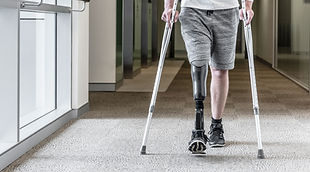

Elbow Pain
The elbow is a highly mobile joint that is susceptible to injuries due to the amount of use we have for our arms. It can have stress fractures, tennis elbow and golfers elbow which are all overuse of the tendons that stabilise the elbow and arm.
The elbow is used as a connector of all the muscles of the hand where they can flex or extend the fingers and wrist
Home / Conditions / Elbow Pain

Why does your elbow hurt?
Your elbow lets you throw, lift, swing, and hug, for starters. You can do all this because it’s not a simple joint. And that means there are a lot of ways things can go wrong.
Your elbow’s a joint formed where three bones come together -- your upper arm bone, called the humerus, and the ulna and the radius, the two bones that make up your forearm.
Each bone has cartilage on the end, which helps them slide against each other and absorb shocks. They’re lashed into place with tough tissues called ligaments. And your tendons connect your bones to muscles to allow you to move your arm in different ways.
If anything happens to any of these parts, not to mention the nerves and blood vessels around them, it can cause you pain.

Diseases of the elbow
Here are some of the different ways your elbow can hurt:
One-time Injuries
Some injuries, hopefully, are one-off events, like when you fall or get hit hard while playing a sport.
-
Dislocated elbow. When one of the bones that forms the elbow gets knocked out of place, you have a dislocated elbow. One of the more common causes is when you put your hand out to catch yourself during a fall. It can also happen to toddlers when you swing them by their forearms -- that’s called nursemaid’s elbow. If you think you or your child has a dislocated elbow, call your doctor right away.
-
Fractured elbow: If one of your arm bones breaks at the elbow, you have a fracture. Usually, this happens with a sudden blow, as you might get in a contact sport or a car accident. And don’t be fooled if you can still move your elbow afterward. If you’re in pain and it doesn’t look right, it could be broken. You'll need medical attention.
-
Strains and sprains: File these under, “Oof, I think I pushed it a little too far.” When muscles get stretched or torn, it’s called a strain. When it’s ligaments, it’s a sprain.
You can get a strain when you put too much pressure on your elbow muscles, like when you lift heavy objects or overdo it with sports.
Elbow sprains are common in athletes who throw, use racquets, or play contact sports.
Both are treated with rest, ice and -- once the pain is gone -- stretching and strength exercises.
Wear-and-Tear Injuries
Other injuries occur over time, as you repeat certain actions and put wear and tear on your elbow. You can injure yourself playing sports or in any number of work settings, from a factory to an office.
Bursitis: Often caused by repeating the same motion over and over, you can also get bursitis from an accident or infection. Bursa are small sacs with fluid in them. You have them in your joints to help cushion your bones, tendons, and muscles. They also help skin slide over bone. But they can get swollen and cause you pain. Often, bursitis is simply treated with pain medicine and starts to get better within a few weeks.
Tennis elbow and golfer’s elbow: These are both types of tendinopathy or tendinosis, which means you have damage in the tendons around your elbow from overuse. Despite the names, the injuries aren’t limited to golfers or tennis players. You’re just more likely to get them based on the arm motions used in those sports. The main difference between the two is that tennis elbow affects the outside of your elbow, while golfer’s elbow affects the inside.
Trapped nerves: You might be familiar with carpal tunnel syndrome, where a nerve that passes through your wrist gets squeezed and causes some wrist and arm issues. You can have similar problems in your elbow.
If you have cubital tunnel syndrome, one of the main nerves in your arm (the ulnar nerve) gets squeezed as it runs along the inside of your elbow and passes through tissue called the cubital tunnel. You may have burning or numbness in your hand, arm, and fingers.
If you have radial tunnel syndrome, you have a similar issue with the radial nerve as it passes through the radial tunnel near the outside of your elbow. You may have burning or numbness on your outside forearm and elbow.

When to call your doctor?
If you think you’ve fractured or dislocated your elbow -- it hurts and doesn’t look right -- go to the emergency room.
Call your doctor if you have:
-
Elbow pain that doesn’t go away with rest and ice, or pain that doesn’t go away even when you’re not using your arm
-
Intense pain, swelling, and bruising around your elbow
-
Pain, swelling, or redness that gets worse, especially if you have a fever, too
-
Problems using your elbow, such as difficulty bending your arm
_edited.png)





